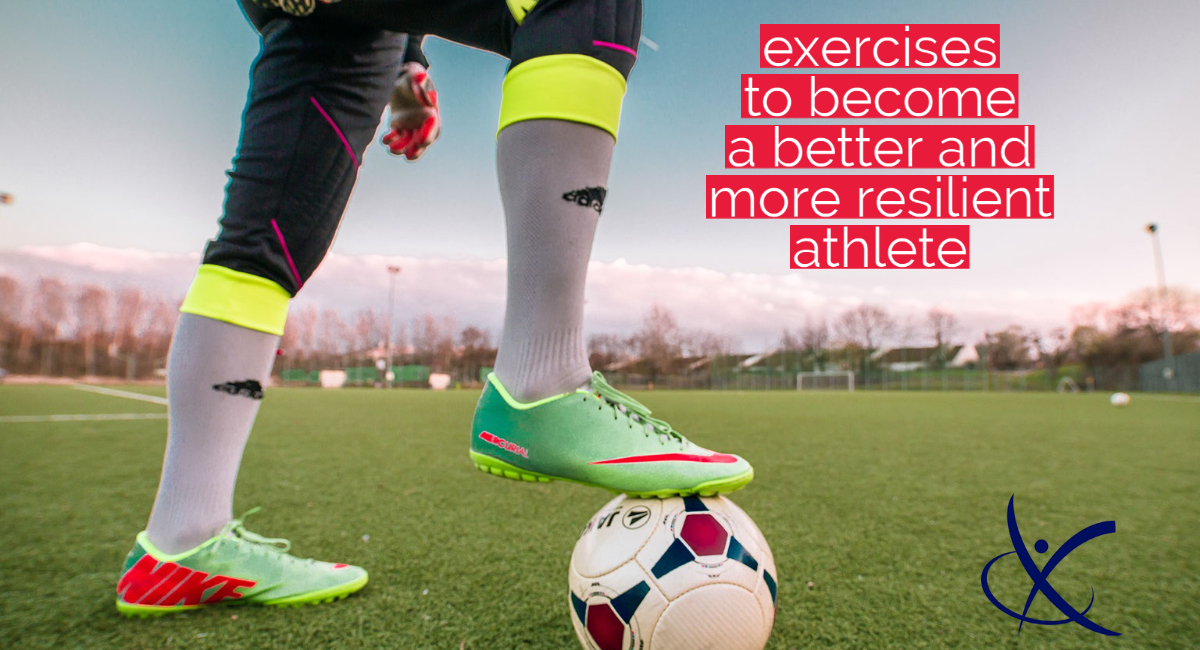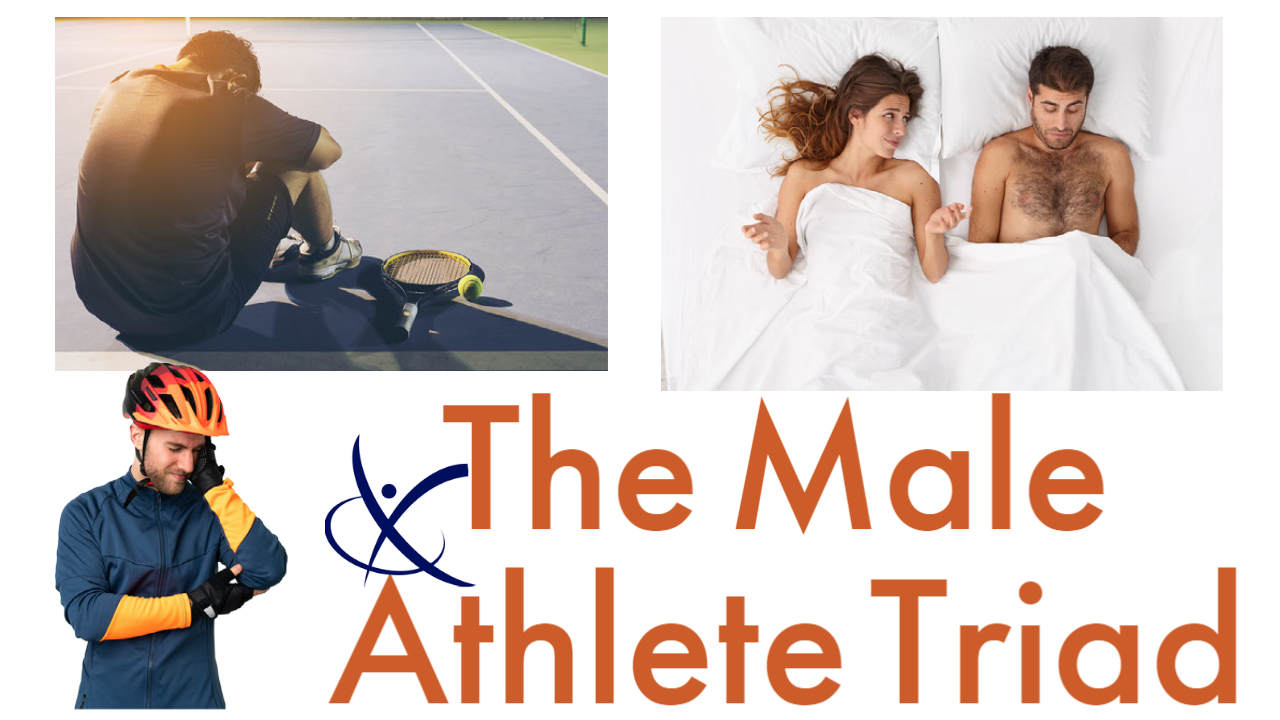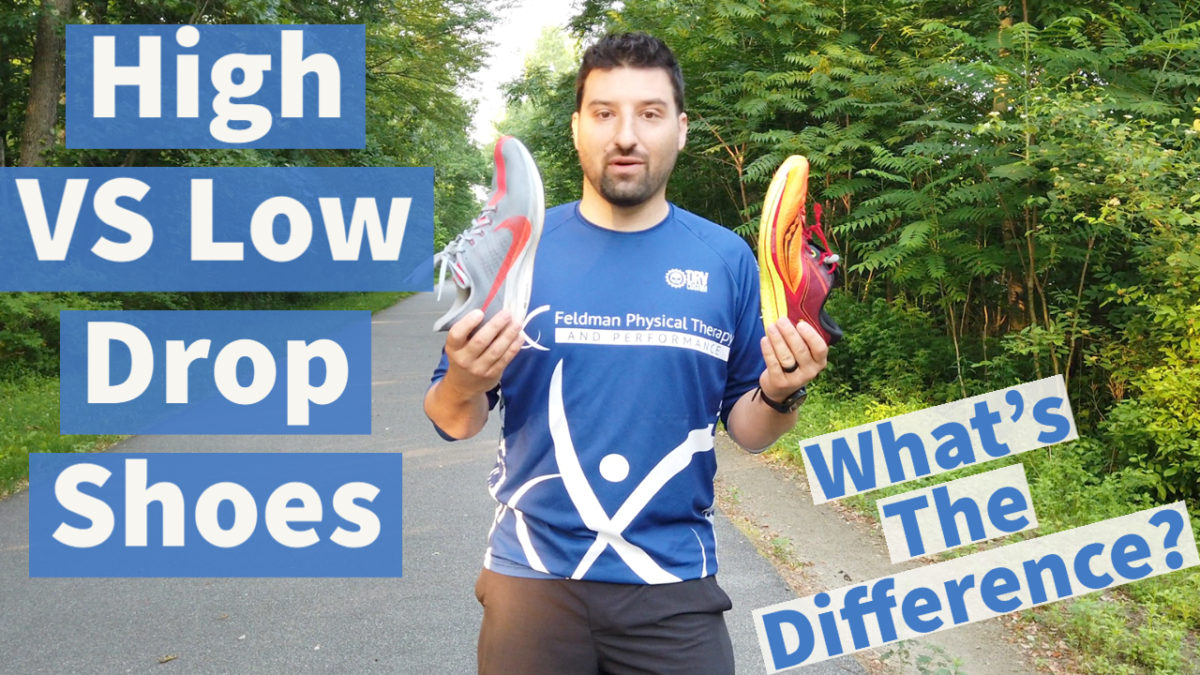
Soccer Specific Strength Training Exercises
June 26, 2021
The Male Athlete Triad
July 11, 2021Why Does Heel-Toe Drop Matter in My Running Shoe?
Have you heard the terms “high drop” or “low drop” when it comes to running shoes? It describes the difference in height between the bottom of the heel and the bottom of the toes (HT Drop). Think of it as a slope, measured in millimeters (mm). Shoes are usually broken down into a few categories. Regardless of how the categories are split, we’ll generally consider 0-4mm as a lower drop shoe while anything in the 10-12mm range a higher drop shoe. So what does this mean for you?
In the world of running shoes, there is no shortage of options. And we’ve spoken at length on the different intricacies of running shoes. Generally, we don’t like to go changing a runner’s shoe unless absolutely necessary because we believe shoes are the last piece of the puzzle. But there are times when it actually matters. For this conversation, we need to break it down simply and understand what low drop vs high drop does to the foot.
HT Drop and Foot Strike
The following is by no means an exact science, yet we find significant correlations for the relationships between certain drops and body mechanics.
In a higher drop shoe, there tends to be a bias towards a rear-foot strike. Additional sole height is needed to achieve this which is what promotes the initial contact with the heel. This type of foot strike is also associated with increased forces at the level of the knee. Several studies have shown the correlation between this type of foot strike and knee stress.
Conversely, a lower drop shoe will allow for, and bias, a forefoot strike. This type of foot strike is associated with reduced joint forces at the knee but increased stress at the level of the foot and ankle. This would make sense considering your forefoot would be the first contact with the ground when running.
DISCLAIMER: This does not mean one type of foot strike is better than the other!
The understanding of footstrike-associated mechanics is purely to show which part of the body is stressed more, and not to promote one over the other. This understanding is important once we dig into a runner’s current or past injury status.
Newton’s Third Law
For every action, there is an equal and opposite reaction. The ground reaction force (GRF) is the equal and opposite reaction that a runner’s body must contend with every single step. It is the force of the ground pushing back up into the body as the foot hits and stays in contact with the ground. What matters here is where and how well the runner will handle this force. When I say “handle” I mean what parts of the body will absorb the GRF well enough to allow the runner to continue step over step over step without breaking down (pain). This matters greatly! And this is where we circle back to the HT drop of the shoe and why it can matter at some times more than others.
If say a runner is battling a recurring issue or some sort of physical limitation, then we may need to see how well that runner is handling the GRF. Are their running style and shoe choice (basically body armor) helping dissipate those forces or contributing by failing to mitigate them appropriately? Let’s use some examples:
Example 1: Knee Pain
A runner with knee pain is like me at a pizza place…it’s not if, it’s when. The problem becomes when we can’t control that from happening. Or when it continues to happen despite all other efforts to address the issue. Wondering whether I’m talking about shoes or pizza? Yea, thought you might be…I’ll let you decide (wink). If for instance, this runner is running in a high drop 10-12mm shoe with a pronounced GRF shock attenuation strategy at the knee then we may want to consider some small changes. The shoe choice “may” be contributing to the offending activity.
Example 2: Plantar fasciopathy
Plantar fasciopathy is a scary phrase for all runners, but it shouldn’t be. Be that as it may, we’re talking about pain on the bottom surface of the foot. If a runner continues to have foot, ankle, or heel pain, then perhaps a lower drop shoe with a significant bias towards a forefoot strike isn’t the ideal scenario while trying to bounce back from said injury. We want to off-load the foot a bit and a forefoot GRF shock attenuation will only stress the foot and ankle more.
For the time being, a different drop shoe may provide the window of opportunity needed to continue running while also minimizing stress to the sensitized area. We may use these changes to our advantage temporarily, or we may find a runner is trying to fit a square peg into a round hole and nudge them towards a permanent shift in drop to address recalcitrant issues or structural anomalies.
The Take-Home?
The more you know about your shoes (and your body) the better off you’ll be. We love to educate our clients, and talk shoes, so this goes hand in hand. Fixating on shoe choice is usually reserved for a last resort but at times it can play an important role temporarily or long term. It just depends on the situation. But one thing is for certain, lower drop shoes and higher drop shoes each provide their own unique patterns for the body and we can identify those patterns. In essence…”The more you know…”
Happy Running!





